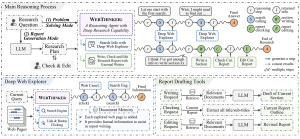What happened. Redis has disclosed and fixed CVE-2025-49844, a critical (CVSS 10.0) vulnerability in the Lua scripting engine that can lead to remote code execution (RCE). An authenticated user can craft a Lua script that manipulates the garbage collector, triggers a use-after-free, and potentially executes arbitrary code.
Redis Cloud customers are already patched. If you self-manage Redis, you must upgrade.
Who’s affected and what versions fix it
- Redis OSS / Community / Stack (with Lua scripting):
8.2.2+, 8.0.4+, 7.4.6+, 7.2.11+ (Stack: 7.4.0-v7+, 7.2.0-v19+) - Redis Software (commercial, self-managed):
7.22.2-20+, 7.8.6-207+, 7.4.6-272+, 7.2.4-138+, 6.4.2-131+
Note: Redis corrected earlier guidance; if you upgraded to 7.22.2-12 or 7.22.2-14, you must move to 7.22.2-20 or later.
10-minute action plan (self-managed)
1) Identify your version
redis-server --version # or:
redis-cli INFO server | grep redis_version
Code language: PHP (php)2) Patch
- Linux packages: install from the official Redis repo or your vendor once fixed builds land.
- Containers/Kubernetes: pull the updated image tag, roll the Deployment/StatefulSet.
- Redis Software: apply the listed fixed build.
3) If you cannot patch today — apply temporary mitigations
- Block Lua scripting for default users (Redis ≥6, ACLs):
ACL SETUSER default -@scripting(Removes EVAL/EVALSHA; review whether your workloads need scripting and grant it only to a dedicated, least-privileged user.) - Legacy configs (where ACLs aren’t feasible): rename script commands to disable them:
rename-command EVAL "" rename-command EVALSHA "" - Reduce exposure immediately:
- Ensure
protected-mode yesand a bind to trusted interfaces only:protected-mode yes bind 127.0.0.1 ::1 10.0.0.0/24 - Enforce AUTH/ACL and TLS where available.
- Firewall Redis to app subnets only (e.g., security groups, iptables/ufw, or Kubernetes NetworkPolicies).
- Ensure
These mitigations don’t remove the bug; they reduce the blast radius until you can upgrade.
How to check for signs of exploitation
Redis reports no evidence of exploitation in Redis Cloud, but you should still look for anomalies:
- Unexpected access paths: new/unknown clients, ingress from unusual IPs/VPCs.
- Script usage out of pattern: spikes in
EVAL,EVALSHA, or unexpected stored functions/scripts. - Crashes from Lua: Redis server crashes with backtraces pointing at the Lua engine.
- Weird child processes or file changes by the
redisuser; unexplained egress traffic from the Redis host/pod. - Configuration/data tampering: surprising edits under the directories that host RDB/AOF/configs.
Quick telemetry to review
- SLOWLOG for unusual heavy script calls:
SLOWLOG GET 128 - Keyspace/command auditing (if you emit logs/metrics) for
EVAL*,FUNCTION, or large outbound payloads. - In K8s, check pod logs, ebpf/XDR detections, and egress deny-list hits.
If you suspect compromise: isolate, forensic-image the host/pod, rotate secrets, and rebuild from known-good images after patching.
Strengthen your Redis security posture (beyond this CVE)
Think in layers. RCE bugs are rare but impactful—good defenses assume a future bug and limit damage.
1) Identity & least privilege
- Use ACLs. Create dedicated users for apps with only the commands they require (e.g., disallow
@scriptingunless strictly needed).ACL SETUSER app on >strongpass ~* +GET +SET -@scripting - Avoid sharing the default user beyond maintenance.
2) Network containment
- Never expose Redis directly to the internet. Bind to loopback/VPC addresses; restrict with firewalls/security groups.
- In Kubernetes: apply NetworkPolicies so only the app namespace/service account can reach the Redis Service/Pod.
3) Configuration hygiene
protected-mode yes, strong AUTH/ACL, TLS (stunnel or built-in TLS).- Consider renaming dangerous commands you never use (e.g.,
FLUSHALL,CONFIG,EVALwhere applicable). - Run Redis as a non-root user; apply read-only FS and seccomp/AppArmor profiles in containers.
4) Observability & response
- Centralize Redis logs, auth failures, ACL denials, and command metrics.
- Alert on
EVAL,EVALSHA,FUNCTION, or sudden latency spikes that could indicate misuse. - Keep SLOWLOG and RDB/AOF snapshots monitored for unexpected changes.
5) Patch discipline
- Track upstream advisories and subscribe to vendor notifications.
- Run a pre-prod Redis cluster for canary upgrades; automate drift checks (image digests, package versions).
FAQ
Is this exploitable without credentials?
By design, the bug requires authenticated access. In practice, many incidents arise because Redis is exposed without auth, uses default configs, or grants users @scripting unnecessarily—turning an “authenticated” bug into a trivial one. Fix exposure and ACLs now.
Can I just disable Lua and be done?
Disabling/renaming EVAL/EVALSHA (or removing @scripting) is a temporary mitigation. Some workloads depend on scripting (or Redis Functions). Upgrade to a fixed version and then re-enable only if needed—under tight ACLs.
Which branches are actually fixed?
OSS/CE/Stack: 8.2.2+, 8.0.4+, 7.4.6+, 7.2.11+.
Redis Software: 7.22.2-20+, 7.8.6-207+, 7.4.6-272+, 7.2.4-138+, 6.4.2-131+.
If you’re on 7.22.2-12 or -14, update again to -20 or newer.
What should I do on Kubernetes?
Update the image tag to a fixed build, roll your StatefulSet, enforce NetworkPolicies, set a PodSecurityContext (no root), and mount configs as read-only. Consider an admission policy that blocks images without fixed CVEs.
Bottom line
- Patch to a fixed release.
- If you can’t yet, disable scripting, lock down network access, and enforce ACL/TLS.
- Add monitoring for script usage and Lua-related crashes.
- Keep these controls—because the best defense against the next bug is least privilege + no exposure + fast patching.









